Product pictures
| Amount Per 1 cup, 215 g | |||
| Calories | 280 Kcal (1172 kJ) | ||
| Calories from fat | 81 Kcal | ||
| % Daily Value* | |||
| Total Fat | 9g | 14% | |
|---|---|---|---|
| Saturated Fat | 4.5g | 23% | |
| Cholesterol | 20mg | 7% | |
| Sodium | 420mg | 18% | |
| Potassium | 830mg | 18% | |
| Total Carbs | 36g | 12% | |
| Sugars | 8g | 32% | |
| Dietary Fiber | 2g | 8% | |
| Protein | 13g | 26% | |
| Vitamin C | 15mg | 25% | |
| Vitamin A | 0.5mg | 15% | |
| Iron | 2.3mg | 13% | |
| Calcium | 150mg | 15% | |
* Percent Daily Values are based on a 2000 calorie diet. Your daily values may be higher or lower depending on your calorie needs.
Find out how many calories should you eat.
Ingredients And Nutrition Overview
Best
choice Good
choice Poor
choice Avoid
it!
choice Good
choice Poor
choice Avoid
it!
-
WeightWatchers Points: 6, PointsPlus: 7, SmartPoints: 9
WeightWatchers Points are estimated by carbohydrates, fats, protein and fiber in product. They are not an affirmation of better quality or nutritional value of the product or its manufacturer. Only way to count for dieters. Less points are better.
Read more at Weight watchers diet review -
Over 25% of daily saturated fat!
Bad! More 25% of daily saturated fat!
For years Saturated fat was claimed to raise cholesterol levels and give us heart attacks. Today different studies refute this claim. They say, that replacing saturated fat with carbohydrates or refined starch or sugar is not changing the heart disease risk. Not processed carbs nor saturated fats are good for you. Only if you replace it with polyunsaturated fat, you'll get a reduction in heart disease risk. So try to have a balanced diet. -
Salty! Has over 18% of the daily sodium max
The average American consumes 5,000 mg of sodium daily — twice the recommended amount amount of 2400mg for healthy adults, this is 1 teaspoon of salt.
For medical reasons many people should not exceed 1500mg of sodium.
Surprisingly, you're responsible for only 15% of the sodium in your diet the bigger part - 75% of the sodium that you consume each day comes from processed foods, not home cooking or the salt shaker.
Excess sodium intake increases the risk of high blood pressure, hypernatremia, hypertension, cardiovascular disease and other heart problems.
Are these reasons enough to cut the sodium intake? No doubt! -
Convert Salt tsps to Sodium mg easily
Salt (NaCl) is not excactly sodium (Na).
It is not right to use these terms as synonyms.
The FDA recommended limit of sodium is 2,300 mg per day (or even less - about 1500 mg while one is on low sodium diets).
This is much less than the weight of salt.
(5,750 mg per day or 3,750 mg for low sodium diet) and not so convenient to calculate.
Know how much sodium is in your salt - without a calculator:
1/4 tsp salt = 600 mg sodium
1/2 tsp salt = 1200 mg sodium
3/4 tsp salt = 1800 mg sodium
1 tsp salt = 2300 mg sodium -
3 tsp of sugars per serving
This volume includes both naturally occurring from ingredients and specially added sugars.
USDA tells us that last years each American consumed an average 130 pounds of caloric sweeteners per year!
That works out to 30 tsp of sugars per day approximately 480 extra calories!
Just to think: Eating just 200 more calories daily than your body requires for body functioning and exercise leads to a 20-pound weight gain in a year. -
More than 8% daily fiber!
Eat more fiber. You've heard it many times. But why it is so good for your health?
Dietary fiber is best known for its ability to make our digestion going right.
So want to prevent or relieve constipation - eat more fiber!
There are also other great health benefits as well, such as lowering your risk of diabetes, heart disease and cancer, and helping to maintain a healthy weight by helping to feel you full longer.
The best source of fiber are fruits, vegetables, whole grains and legumes and not processed foods with added fiber. -
Interested in getting more protein?
Protein is important, but some of the protein you find in this product isn't exactly natural.
The protein comes from one of the following sources:
- milk protein concentrate
- whey protein isolate
- soy protein isolate
and that it's not ideal to get protein only from processed goods.
If you're looking for more protein, try beans, quinoa, nuts, seeds, peas and spinach & leafy greens.
Not only do they have protein, they're filled with other vitamins and minerals. -
Naturally high in Vitamin C
You get real, natural easy absorbing Vitamin C from this product, not as a artificial fortified ingredient.
This is great! Let's try to get the best from the real food, because we get too much from artificial ingredients nowdays. -
Carrageenan is an additive made from seaweed.
It is used as a thickener in products such as ice cream, jelly, chocolate milk, infant formula, cottage cheese.
It is a vegetarian and vegan alternative to gelatin.
It has been used for hundreds of years in Ireland and China, but only made headway into modern food processing in the last 50 years.
The processing steps after harvesting the seaweed include drying, grounding, filtration, treatment with potassium hydroxide, removal of cellulose by centrifuge, concentration by evaporation, drying, and grounding.
Interestingly, the Philippines account for the vast majority of the world supply of carrageenan.
In some animal studies, carrageenan was shown to cause intestinal lacerations and tumors.
A 2001 meta-study of 45 peer-reviewed studies concluded that carrageenan consumption may result in gastrointestinal malignancy and inflammatory bowel.
The FDA has approved carrageenan as safe, basing its decision on industry funded studies.
European agencies and the World Health Organization have also deemed carrageenan safe, with the exception of infant formula.
The fear is the a baby's gut may be unable to handle the large carrageenan molecules.
In some individuals carrageenan may cause intestinal discomfort or worse.
Allergens
Gluten Allergy, Wheat Allergy, Milk Allergy, Lactose Allergy, Corn Allergy, Soy Allergy
Lasagna Ingredients
Tomato Puree (Water, Tomato Paste, Tomatoes [Tomatoes, Tomato Juice, Citric Acid, Calcium Chloride]), Cooked Enriched Macaroni Product (Water, Semolina [Milled Wheat, Enriched with Niacin, Ferrous Sulfate, Thiamin Mononitrate, Riboflavin, Folic Acid]), Cooked Beef, Mozzarella Cheese (Pasteurized Part-Skim Milk, Cheese Culture, Salt, Enzymes), Cottage Cheese (Fat Free Milk, Milk, Cream, Nonfat Dry Milk, Whey, Salt, Guar Gum, Mono- and Diglycerides, Carrageenan, Locust Bean Gum, Polysorbate 80, Potassium Sorbate [to Protect Flavor], Microbial Enzymes), Sugar, Parmesan Cheese (Pasteurized Part-Skim Milk, Cheese Cultures, Salt, Enzymes), Onion, Modified Cornstarch, Beef Broth Flavor (Beef Broth, Salt, Hydrolyzed Soy Protein, Caramel Color), Salt, Spices, Xanthan Gum, Garlic Powder, Mono- and Diglycerides.
You Might Also Like
% RDI of Main Nutrition Facts
14%
of RDI* (280 calories) 215 g
-
Cal: 14 %
-
Fat: 13.8 %
-
Carb: 12 %
-
Prot: 26 %
-
0%25%75%RDI norm*
Calories Breakdown
- Carbs (52%)
- Fat (29.2%)
- Protein (18.8%)
Get Your Recipe of Health!
Follow RecipeOfHealth on Facebook!

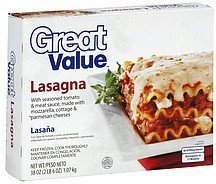
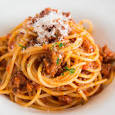
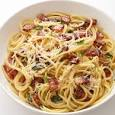
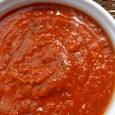
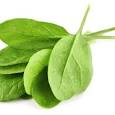
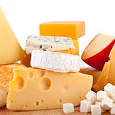

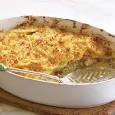
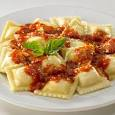
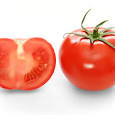
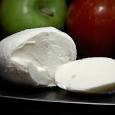
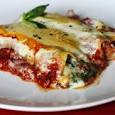
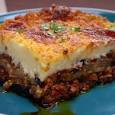
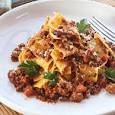
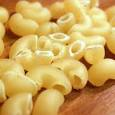
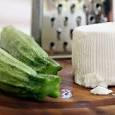
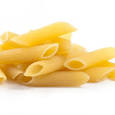
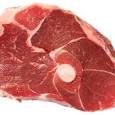
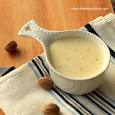
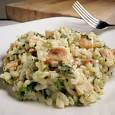









Add your comment